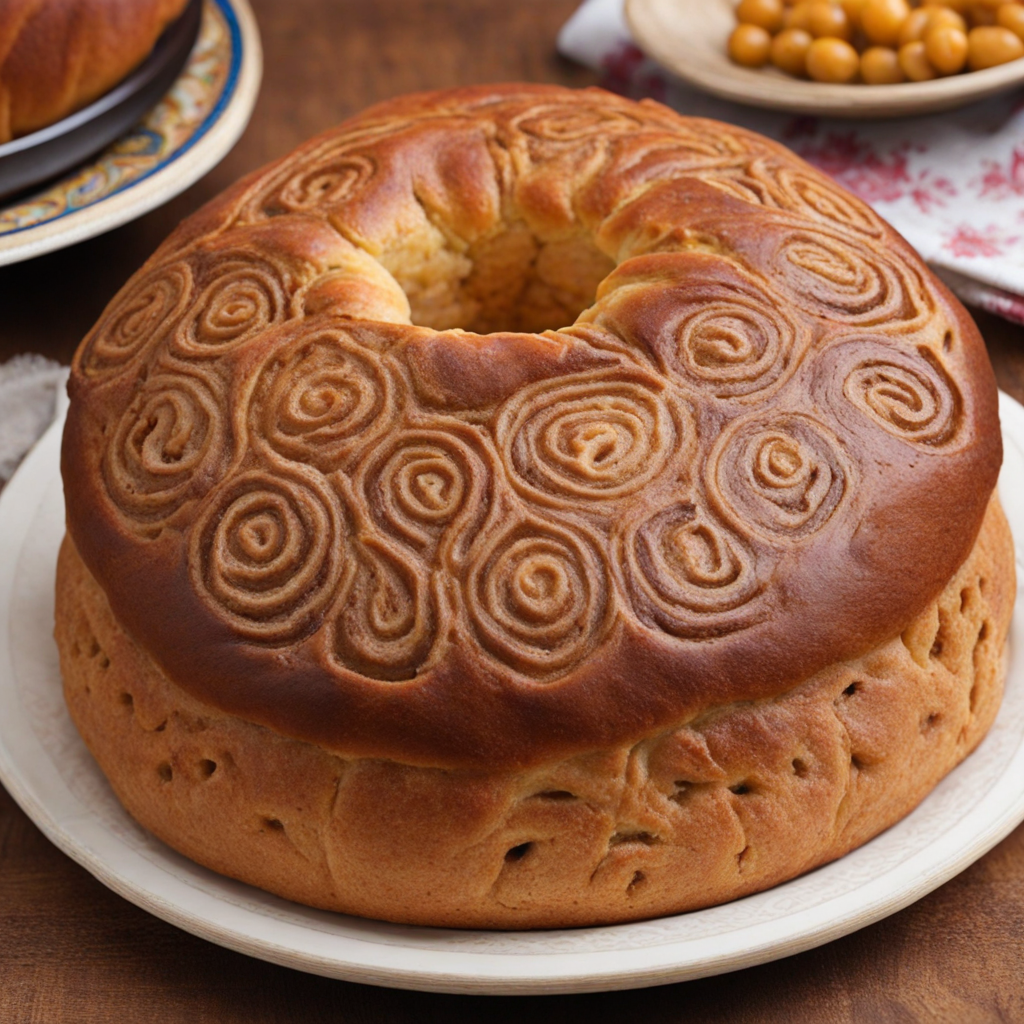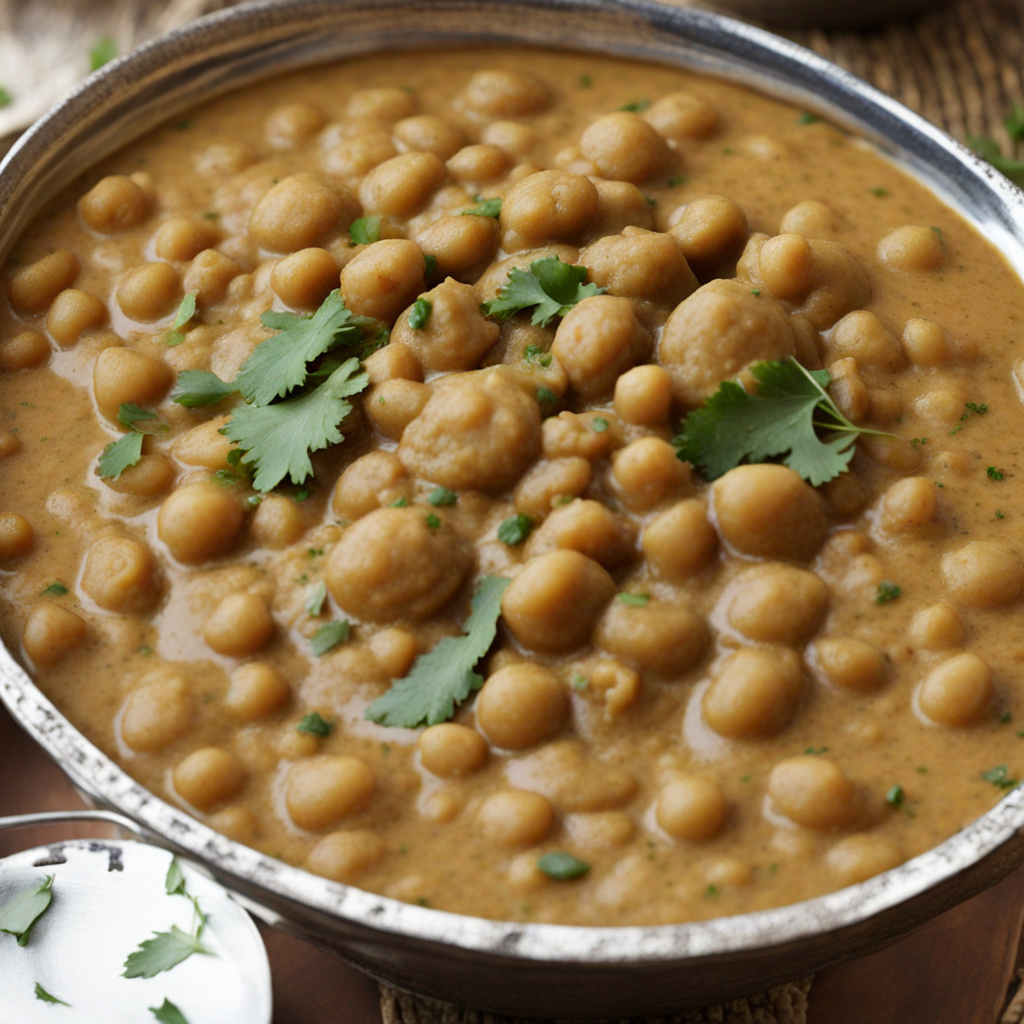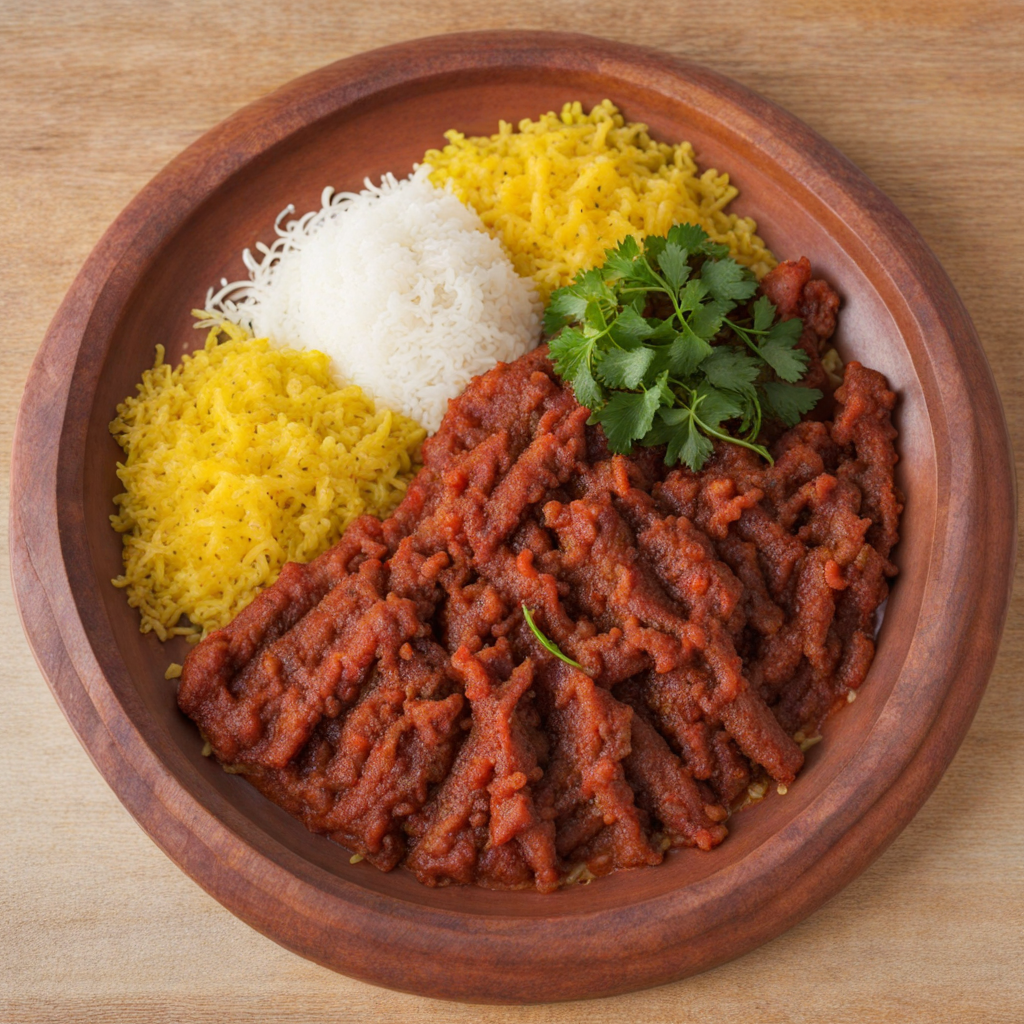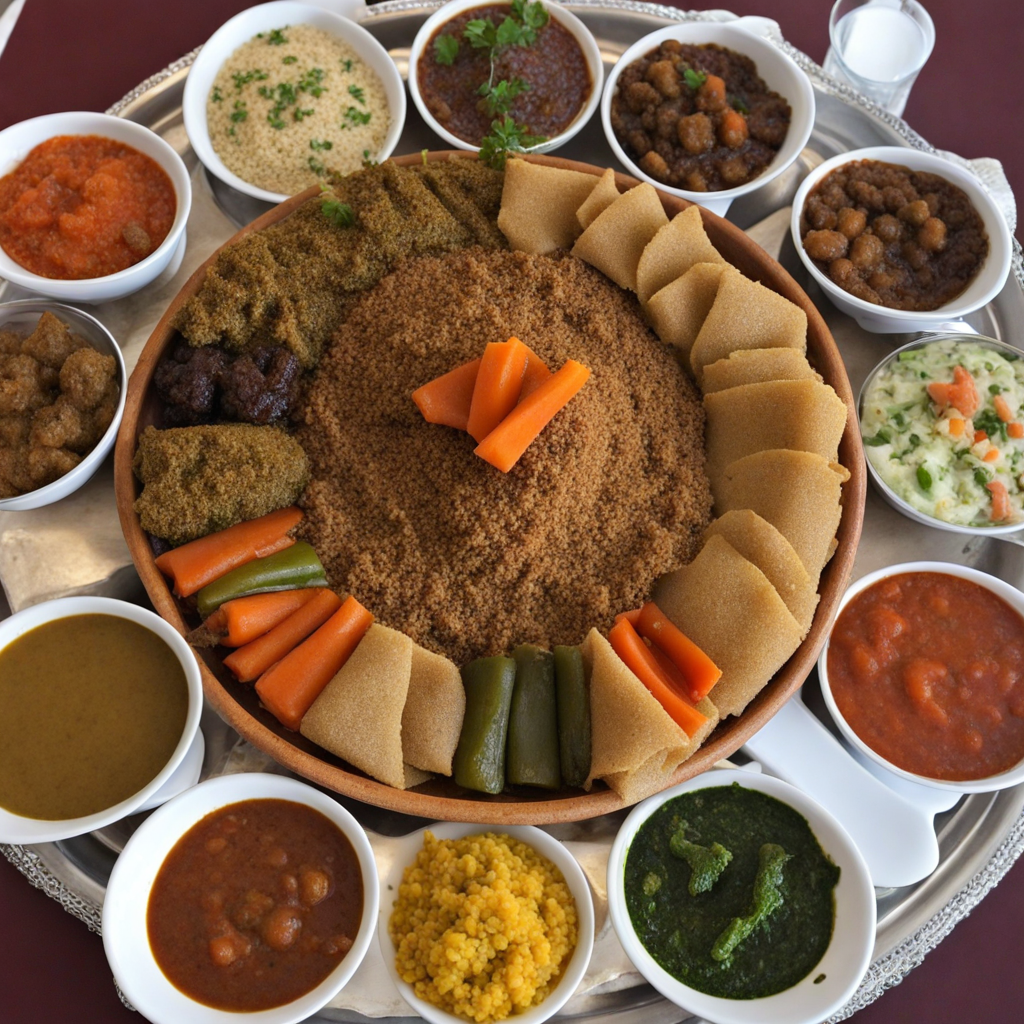Ambasha
Ambasha is a traditional Ethiopian bread that embodies the rich culinary heritage of the country. This round, flatbread is often characterized by its golden-brown crust and soft, fluffy interior. Made from a mixture of wheat flour, yeast, and a hint of sugar, Ambasha is typically flavored with spices like cardamom and sometimes even a touch of sesame seeds, giving it a unique aromatic profile. The slightly sweet and spiced flavor makes it a perfect accompaniment to various Ethiopian dishes, enhancing the overall dining experience. Often enjoyed during special occasions and festive gatherings, Ambasha is not just a staple food but also a symbol of hospitality and celebration in Ethiopian culture. When freshly baked, the bread has a delightful texture that is crispy on the outside, while still being soft and chewy on the inside. Its versatility allows it to be served as a side with stews, salads, or even enjoyed on its own with a smear of butter or honey. The preparation of Ambasha is an art in itself, often made in large batches for sharing among family and friends. Its distinctive shape, usually resembling a decorative sun or wheel, adds to its visual appeal on the dining table. As you take a bite, you'll experience a warm, comforting sensation, with the spices awakening your taste buds. Discovering Ambasha is not just about savoring a new flavor; it's about experiencing a piece of Ethiopian culture that brings people together through food.
How It Became This Dish
The History of አምባሻ (Ambasha): A Cultural and Culinary Jewel of Ethiopia #### Origins of Ambasha Ambasha, a traditional Ethiopian bread, has deep roots in the country's rich culinary heritage. The name "Ambasha" is derived from the Ge'ez word "amabas," which means "to bake," a fitting term for this delightful bread that is often served during significant cultural and religious events. Its origin can be traced back to the ancient civilizations of Ethiopia, where bread-making was not only a necessity but also an art form. Ethiopia's geographical diversity—from highlands and plateaus to valleys—has fostered a unique agricultural landscape, which has greatly influenced its food culture. The cultivation of grains such as teff, wheat, and barley has been integral to the Ethiopian diet for centuries. Ambasha is traditionally made from wheat flour, sometimes mixed with teff flour, and is often flavored with spices such as cardamom and sometimes even infused with honey for a touch of sweetness. #### Cultural Significance Ambasha is not merely a food item; it is a symbol of Ethiopian hospitality and cultural identity. It is often prepared for special occasions, such as weddings, religious holidays, and family gatherings, making it an integral part of communal celebrations. Its round shape signifies unity and wholeness, reflecting the Ethiopian value of togetherness. During significant religious events, particularly among Ethiopian Orthodox Christians, Ambasha takes on a sacred role. It is often part of the feast during holidays like Meskel (the finding of the True Cross) and Timkat (Epiphany), where the bread is blessed and shared among family and friends. The act of breaking bread together is seen as a way to foster community ties and express gratitude. The preparation of Ambasha can also be a communal activity. Families often come together to mix, knead, and shape the dough, creating a bonding experience that transcends generations. This practice not only preserves culinary traditions but also strengthens familial and social relationships. #### Development Over Time As Ethiopia has evolved through various historical phases—from the Kingdom of Aksum to the influence of Islam and the spread of Christianity—the methods and ingredients used in making Ambasha have also undergone changes. Initially, Ambasha was a simple unleavened flatbread, but with the introduction of fermentation techniques, the bread evolved into a leavened variant that is more common today. The introduction of baking methods, such as the use of traditional clay ovens called "mita," has also played a significant role in the development of Ambasha. These ovens allow for even cooking and a distinct flavor that is characteristic of the bread. In urban areas, modern baking techniques and gas ovens have made preparation more accessible, but many still prefer the traditional methods for their authenticity. The incorporation of various spices and flavors into Ambasha has also changed over time. While the classic version remains popular, contemporary variations now include ingredients like sesame seeds, poppy seeds, and even dried fruits, reflecting the diverse culinary influences that have permeated Ethiopian cuisine. In recent years, there has been a resurgence of interest in traditional foods, including Ambasha, partly driven by a broader appreciation for authentic culinary experiences and a growing awareness of health and nutrition. As a result, many are returning to traditional recipes, emphasizing the use of whole grains and natural ingredients, which are not only healthier but also more sustainable. #### Ambasha in Contemporary Culture Today, Ambasha continues to hold a cherished place in Ethiopian culture. It is often showcased in restaurants that specialize in traditional Ethiopian cuisine, where it is served alongside stews, salads, and other accompaniments, making it a staple on the dining table. Its unique texture—a delightful combination of soft and slightly crispy—is a perfect vehicle for scooping up flavorful dishes like Doro Wat (spicy chicken stew) or Shiro (spiced chickpea puree). Moreover, the bread has found its way into the diaspora, with Ethiopian communities around the world celebrating their culinary traditions by making Ambasha for special occasions or even daily meals. Food festivals and cultural events often feature Ambasha, allowing a broader audience to appreciate its significance and taste its deliciousness. #### The Future of Ambasha As Ethiopia continues to modernize and globalize, the future of Ambasha remains bright. With an increasing number of people interested in the stories behind their food, Ambasha stands as a testament to the enduring connection between food, culture, and community. Efforts to preserve traditional culinary practices are underway, with initiatives aimed at teaching younger generations the art of making Ambasha and other traditional dishes. Furthermore, the growing trend of farm-to-table dining and an emphasis on local, sustainable ingredients provide an opportunity to celebrate Ambasha’s agricultural roots. By sourcing local grains and spices, cooks can ensure that every loaf of Ambasha reflects the unique terroir of Ethiopia, connecting people to the land and its history. In conclusion, Ambasha is more than just a type of bread; it is a significant cultural artifact that encapsulates the essence of Ethiopian hospitality, community, and tradition. Its evolution over time—from a simple flatbread to a cherished ceremonial dish—illustrates the dynamic nature of Ethiopian cuisine and its ability to adapt while retaining its core values. As it continues to be cherished both in Ethiopia and among the diaspora, Ambasha will undoubtedly remain a delicious link to the past and a bridge to the future of Ethiopian culinary heritage.
You may like
Discover local flavors from Ethiopia







